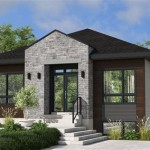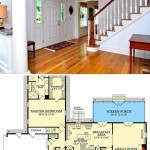Tiny Log Home Floor Plans: Designing Your Dream Cabin
The allure of a tiny log home is undeniable. These charming structures evoke a sense of rustic charm and cozy simplicity. But beyond the aesthetic appeal lies the practical challenge of designing a functional and comfortable living space within a limited footprint. Tiny log home floor plans play a crucial role in maximizing space and ensuring a fulfilling living experience.
Tiny log homes, typically ranging from 200 to 600 square feet, demand deliberate planning to incorporate all essential elements. Efficient layouts and innovative design strategies are crucial for creating a space that is both inviting and practical. This article delves into the key considerations for designing tiny log home floor plans, providing valuable insights for those seeking to build their dream cabin.
Prioritize Functionality and Flexibility
The first step in designing a tiny log home floor plan is identifying essential functions and prioritizing space allocation. While the footprint may be small, it's crucial to accommodate key areas such as sleeping, cooking, dining, and living. Flexibility is key, as multi-functional spaces are often necessary to make the most of limited square footage. For instance, a sofa bed can double as a seating area and a sleeping space, while a kitchen island can serve as both a food preparation surface and a breakfast bar.
It's also essential to consider the flow of traffic within the home. Open floor plans can create a sense of spaciousness and improve the flow of movement, while strategically placed furniture can help define different zones within the space.
Maximize Vertical space
Tiny log home floor plans often leverage vertical space to maximize functionality. Loft areas, for instance, can create additional sleeping space or even a dedicated home office. This design strategy not only expands the usable area but also adds visual interest to the overall design. Consider incorporating built-in furniture such as bunk beds, murphy beds, or pull-down desks that can fold away when not in use. Window placement is another key element in maximizing vertical space. Larger windows can flood the interior with natural light, making the smaller space feel more spacious and airy.
Embrace Minimalism and Efficient Storage
Tiny log homes thrive on minimalism. A streamlined approach to furniture selection and decor is essential to creating a sense of spaciousness. Choose furniture that serves multiple purposes, such as a coffee table with built-in storage or a dining table that can also be used as a workspace. Storage solutions are equally critical in tiny homes. Consider maximizing vertical space by incorporating built-in shelves, drawers, and cupboards. Wall-mounted organizers, under-bed storage, and even utilizing the space under stairs can all contribute to a more organized and clutter-free environment.
Embrace natural materials such as wood and stone, which are commonly used in log home construction. These materials complement the rustic charm of the structure and can create a warm and inviting atmosphere. By focusing on functionality, utilizing vertical space, and opting for a minimalist approach, tiny log home floor plans can facilitate a comfortable and fulfilling living experience within a compact footprint.

Tiny Houses Living Large Southland Log Homes

Tiny Log Cabin Kits Easy Diy Project

Tiny Log Cabin Kits Easy Diy Project

Lodge Log And Timber Floor Plans For Homes Lodges Cabins Bear Lake

Bluebird 10x12 Log Cabin Meadowlark Homes

Tiny Log Cabin Kits Easy Diy Project Craft Mart

Small Log Cabin Plans Refreshing Rustic Retreats

Log Home Floor Plans

Small Log Cabin Plans Tiny Cabins For Gastineau Homes

Pin Page








